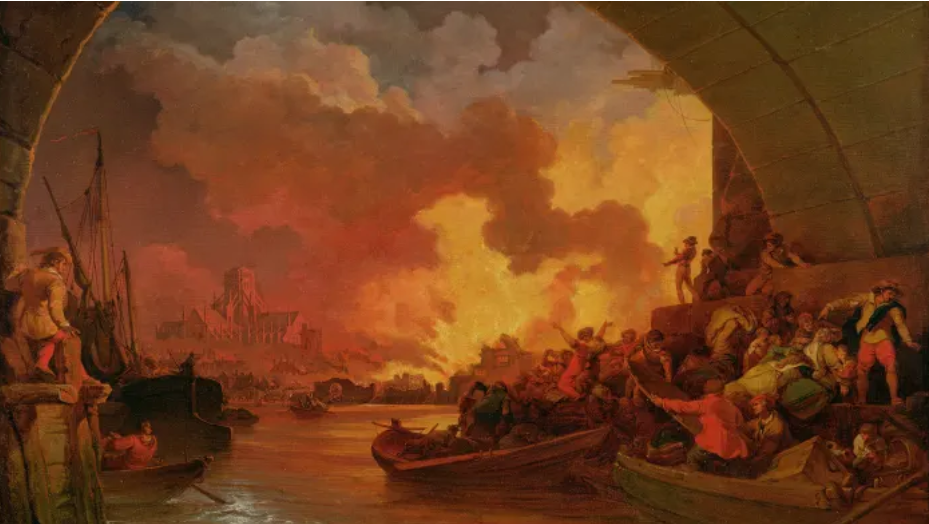What happened?
- On September 2, 1666, a fire began in London when Thomas Farrinor, King Charles II’s baker did not properly extinguish his oven for the night. The fire blazed for the next 4 days before it was finally brought under control on September 6, 1666.
- Only 16 people were known to have dried in the fire, but 100,000 were left homeless and 80% of London was burned down, including homes and historical landmarks, such as St. Paul’s Cathedral.
- The fire was particularly devastating because the summer of 1666 was exceptionally hot, dry and windy. Also, the city of London was not conducive to protecting against fires. Streets were narrow, buildings made of oak timber were crowded together and there were no permanent fire departments.

The Great Fire of London (1797) by Philip-James de Loutherbourg, Yale Center for British Art, New Haven, Connecticut (from Heathcote, 2016).
How is this related to climate?
- The Little Ice Age was a period of widespread cooling and an average drop in global temperatures from around 1300 to 1850, and was also associated with increased climate variability. The year of 1666 was one example of such extreme variability. The winter of 1665-1666 was very cold and harsh, and was followed by a very hot and dry summer. The hot, dry weather increased the fire’s ability to spread and engulf London in early September 1666.
References and additional resources
- Heathcote, E. “How the Great Fire of 1666 Shaped Modern-Day London.” Financial Times. 2016. www.ft.com/content/a22c930c-6a0d-11e6-a0b1-d87a9fea034f.
- History.com Editors. “Great Fire of London Begins.” History. 2010. www.history.com/this-day-in-history/great-fire-of-london-begins.
- Lanchester, J. “How the Little Ice Age Changed History.” The New Yorker. 2019. https://www.newyorker.com/magazine/2019/04/01/how-the-little-ice-age-changed-history.
- Mann, M. E. “Little Ice Age.” Encyclopedia of Global Environmental Change, vol. 1, 2002, pp. 504–509. www.meteo.psu.edu/holocene/public_html/shared/articles/littleiceage.pdf.
